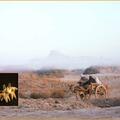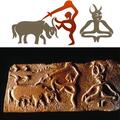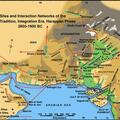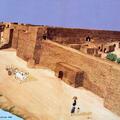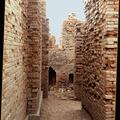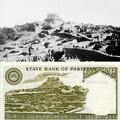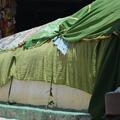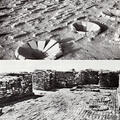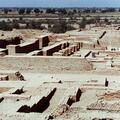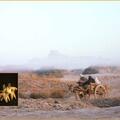Carts: Then and Now
The modern road winds through the low-lying area between the "citadel" and "lower town." On the left is an ox or water buffalo-drawn cart and driver from Harappa, possibly a toy, but clearly representative of what was used many thousands of years ago. Several styles of carts as well as wheels made of terracotta have been found at Indus sites. These were probably originally held together by wooden components that have not preserved. These terracotta carts are very similar to carts in South Asia today.
See also Jonathan Mark Kenoyer's article Wheeled Vehicles of the Indus Valley Civilization.

